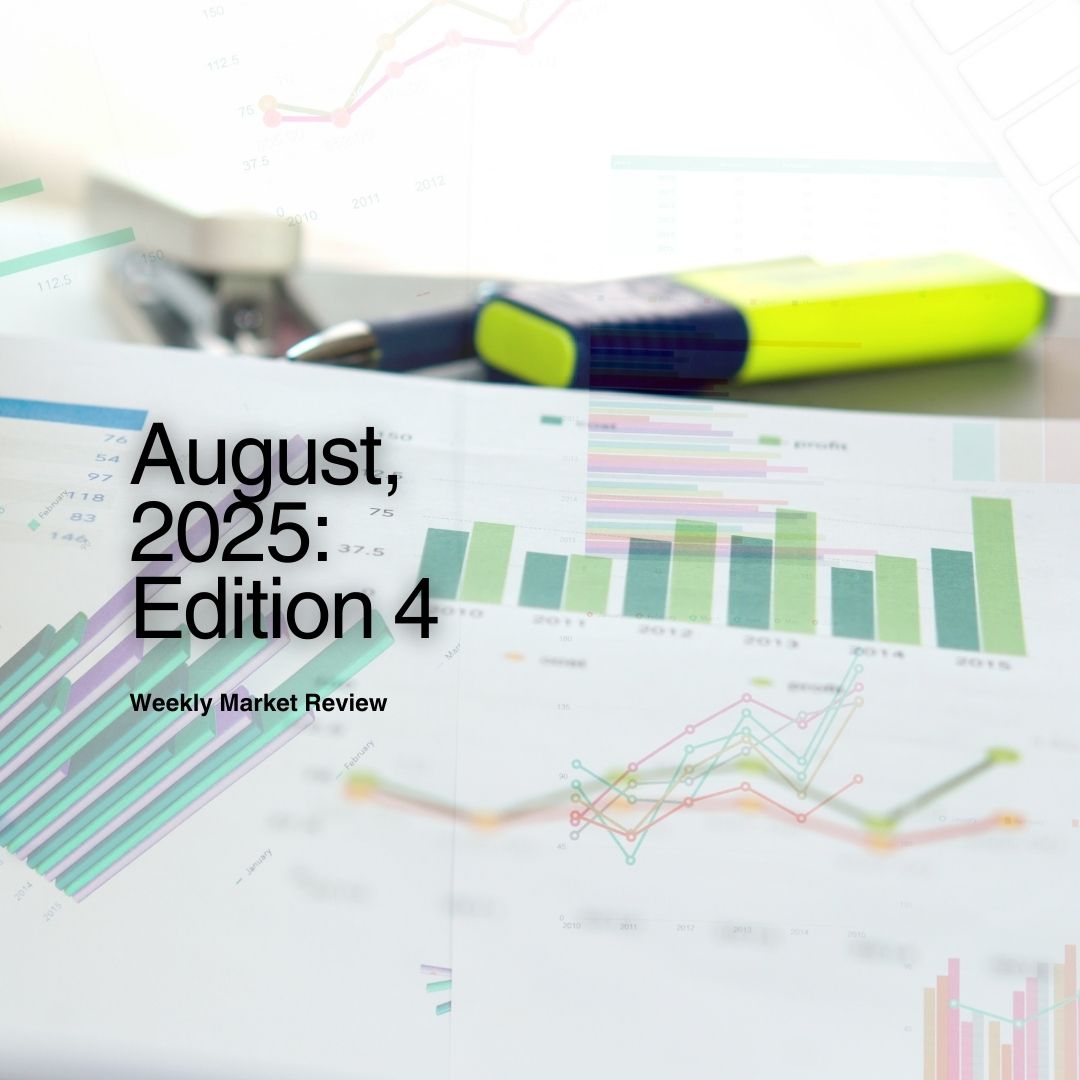

The Nigerian interbank money market opened with a deficit of over ₦608 billion on Friday, closing out a week that had been awash with liquidity. Money market rates moderated slightly, with Overnight (O/N) settling at 29.15% from a high of 32.70%, while the Open Repo Rate (OPR) peaked at 32.40% before closing at 28.90%.
The Nigerian interbank market was buoyed by inflows (over ₦1.5 trillion) from coupons and maturities last week, complemented by a pre-scheduled Nigerian Treasury Bills (NTB) auction on August 20, 2025. The auction attracted significant investor participation, and total subscription reached ₦396.42 billion against an offer of ₦230 billion (1.7X oversubscribed). Despite the healthy demand, allotments stood at ₦303.79 billion, skewed heavily toward the 364-day tenor, which accounted for nearly 88% of the total issuance.
Following this, the Central Bank of Nigeria (CBN) conducted an Open Market Operation (OMO) auction on Thursday, August 21st, 2025, which drew robust participation. Subscription totalled ₦1.02 trillion against an offer of ₦600 billion, resulting in an over-demand of about 1.7 times and allotment of ₦897.19 billion across two maturities: 89-day and 124-day.
In the FX market, the Naira traded between $/₦1,532.00 and $/₦1,538.50 during the week, closing at $/₦1,535.01 on Friday. Global markets were relatively bearish for most of the week until the US Federal Reserve Chairman indicated on Friday that the Fed may need to cut rates but will proceed with caution.
The NTB auction of August 20, 2025, reflected a mixed demand profile across maturities, with weak appetite at the short end, modest interest in the mid-tenor, and strong demand for the one-year bill. The 91-day paper was the least attractive, drawing subscription of only ₦10.89bn against its offer, with an allotment of 0.71%. The stop rate cleared at 15.35% (35bps above the previous close and a 2.33% rise). The 182-day bill fared better, recording near-full subscription of ₦29.35bn versus its offer, with 0.94% allotted. Its stop rate steadied at 15.50%, the mid-point of the bid range indicating a balanced but tepid interest relative to other maturities. The clear standout was the 364-day bill, attracting ₦356.18bn in bids, which was over 2.4x its offer, ultimately settling at 0.75% allotted at 17.44% stop rate, a 94bps higher than the previous close. Notably, bids stretched as high as 23.00%, reflecting some conviction that rates may rise further.
NTB Auction | August 21, 2025 | August 6, 2025 | ||||
Tenor | Actual | Cleared | Diff. | Actual | Cleared | Diff. |
91-day | 15.2400 | 15.3500 | 0.1100 | 16.2400 | 15.0000 | (1.2400) |
182-day | 15.7500 | 15.5000 | (0.2500) | 16.2900 | 15.0000 | (1.2900) |
364-day | 19.4400 | 17.4400 | (2.0000) | 17.9900 | 16.5000 | (1.4900) |
A comparison of the last two auctions (Aug. 6 and Aug. 21, 2025), shows the DMO leaning on bid distribution pattern to manage borrowing costs, tolerating slight upward adjustments. On Aug. 6, stop rates were kept well below market bid averages across all tenors (–124bps, –129bps, and –149bps for the 91-, 182-, and 364-day). By Aug. 21, however the DMO allowed the short and mid papers to clear closer to bid averages (15.35% vs. 15.24%, and 15.50% vs. 15.75%) but tightened further at the 364-day (17.44% vs. 19.44%, –200bps). This trend indicates a deliberate strategy to sustain investor participation by meeting the market halfway at the front end, keeping rates at 15% levels, while containing debt service risks at the long end, even as investors continue to push rates higher amid inflationary and liquidity pressures.
Overall, the recent auction outcome highlights a rising yield curve, with the government facing a higher cost of borrowing, particularly on the one-year paper, while investors continue to prioritize long-term instruments as a hedge against macroeconomic uncertainties, pulling the secondary market yields to adjust upward.
AUCTION DATE | 20-08-2025 | 20-08-2025 | 20-08-2025 |
ALLOTMENT DATE | 21-08-2025 | 21-08-2025 | 21-08-2025 |
MATURITY DATE | 20-11-2025 | 19-02-2026 | 20-08-2026 |
TENOR | 91-DAY | 182-DAY | 364-DAY |
OFFER (₦) | 50,000,000,000 | 30,000,000,000 | 150,000,000,000 |
SUBSCRIPTION (₦) | 10,894,932,000 | 29,350,403,000 | 356,177,856,000 |
ALLOTMENT (₦) | 7,703,444,000 | 27,703,815,000 | 268,382,665,000 |
RANGE OF BIDS (%) | 14.4500 – 16.0300 | 15.0000 – 16.5000 | 15.8800 – 23.0000 |
STOP RATES (%) | 15.3500 | 15.5000 | 17.4400 |
PREVIOUS STOP RATES (%) | 15.0000 | 15.5000 | 16.5000 |
The Apex Banks’ OMO auction on August 21, 2025, further revealed a shift in liquidity positioning and rate expectations. The 89-day bill distinctly underperformed, attracting bids of ₦2.25 billion against an offer of ₦300 billion, all allotted at a stop rate of 25.50%, the ceiling of its bid range. This indicates the authorities’ willingness to absorb the cost despite its low demand and investors’ reluctance to commit to ultra-short paper at yields that barely compensate for prevailing liquidity and inflation risks.
In contrast, the 124-day bill was heavily oversubscribed, pulling in ₦1.01 trillion in bids against its offer. The stop rate cleared at 25.99%, approx. the bid range midpoint, a steep rise of 229bps (on the longer end) from the previous auction. An outcome that reflects investors’ increased preference for slightly longer OMO maturities that balance high returns with manageable duration risk.
Broadly, the results reveal CBN’s resolve to tighten short-term rates and absorb excess liquidity, while acknowledging pricing pressures amidst funding costs management. This dynamic has reinforced an increase in the OMO yield curve, with the effective yields edging at 28.50%.
TENOR | AUCTION DATE | OFFER (₦’ B) | BIDS (₦’ B) | RANGE OF BIDS (%) | STOP RATES (%) | PREVIOUS STOP RATES (%) | TOTAL SALE (₦’ B) |
89-DAY | 21-08-2025 | 300.00 | 2.25 | 24.4400-25.5000 | 25.5000 | 0.000 | 2.25 |
124-DAY | 21-08-2025 | 300.00 | 1,012.94 | 23.9500-28.0000 | 25.9900 | 23.7000 | 894.94 |
The Debt Management Office (DMO) in its August 21, 2025 circular, announced the August 2025 FGN Bond auction scheduled for August 25, offering a total of ₦200 billion split evenly across two instruments: a new 5-year issuance (FGN JUL 2030), and re-opening of the 17.95% FGN JUN 2032. The offer represents a sharp 250% increase in offer volume from July’s 80 billion, reflecting rising borrowing needs and the government’s ongoing strategy to balance funding needs through new issues and re-openings. Market sentiment is likely to favour the 7-year reopening given its attractive coupon and existing secondary market depth, though the new 5-year issuance may appeal to investors seeking duration diversification and attractive rates.
The secondary market opened the week with more supply than demand with activity concentrated between the upper-16% and 17% levels across (Aug. 6 & 20, Feb. 19, Feb. 5, Jul. 23, Mar. 19 NTBs), and key bonds (2029s, 2031s, 2032s, 2033s and 2034s). Following the NTB and OMO auction results, and the release of the FGN Bond circular on Thursday, market retraced to pull demand up 18% levels particularly on the 2031s, 2032s, 2033s, and 2034s. At the end of the week, bids outpaced offers across the curve, with stronger demand observed at the longer end of both OMO and NTB bills.
The Nigerian Exchange All-Share Index (ASI) closed the week on a bearish note, shedding 2.57% from 144,722.47 points at Monday’s open to 141,004.00 points by Friday. The index endured three straight sessions of declines driven by profit-taking and cautious sentiment, briefly rebounding on Thursday before slipping further at week’s end. Overall, the performance was indicative of sustained investor apathy amid macroeconomic headwinds, with bargain-hunting insufficient to offset the broader risk-off tone.
Crude oil markets posted their first weekly gain in three weeks, with Brent climbing back above $67/bbl and WTI stabilizing around $63/bbl. The rally was driven by a sharper-than-expected U.S. crude and fuel inventory draw, with the EIA reporting a 6 million-barrel decline in crude stocks and sizeable drops in gasoline and distillates, signalling resilient demand despite persistent global pressures. Prices, which had hovered near three-month lows earlier in the week, were lifted by this demand signal, helping Brent advance from $65.66 on Monday to $67.80 on Sunday, while WTI rose from $62.66 to $63.77.
Geopolitical factors remained a key driver of volatility. Hopes for a U.S.-brokered peace deal between Russia and Ukraine briefly pressured prices on expectations of potential sanctions relief, but sentiment reversed as Moscow escalated strikes and Kyiv rejected concessions. Additionally, the U.S. imposed a 25% tariff on Indian goods in response to India’s continued Russian oil imports, raising concerns of trade frictions reshaping global flows. Despite the rebound, oil remains down more than 10% month-to-date, with attention now focused on macroeconomic cues, particularly the US Federal Reserve’s Chair Jerome Powell’s remarks at Jackson Hole, which will shape demand expectations and broader risk sentiment.
The latest auctions reflect a complimentary approach to monetary and fiscal policy administration, with the CBN maintaining elevated OMO yields to keep the Naira competitive and inflation under wraps and with the DMO accommodating higher yields to meet borrowing needs. While this approach delivers on short-term goals, FX stability on one hand and fiscal cost control on the other, it still allows for some distortions; as OMO bills continue to appear far more attractive than any other risk free asset class.
Macroeconomic uncertainty continues to weigh on sentiment: volatile oil prices amid geopolitical tensions, weaker sanction enforcement on Russian crude, and rising OPEC+ supply, while investors react to the US Federal Reserve’s guidance at Jackson Hole. The August FGN bond auction will be a key test of market direction, with tight system liquidity and elevated funding needs, prompting higher investor bids, especially at the long end. Marginal rates are thus expected to inch upward in line with the recent momentum in the local debt market. A fresh OMO auction is also anticipated to sterilize maturity inflows during the week. Contrary to popular opinion, we suspect that the Jerome Powell’s prompt alone may not be sufficient to push cryptocurrencies to new highs as the industry flagship (Bitcoin) feels largely overpriced and might have a bandwagon correction effect on all other coins however imperfect.
By: Sandra A. Aghaizu
Oil is no mere product this week…
It is a restless giant, rising after three weeks on its knees.
From the depths of $65, Brent rose above $67,
while WTI steadied its breath at $63.
The giant roared with an empty belly.
America’s vaults bled six million barrels,
gasoline and diesel vanished like offerings laid upon an altar…
proof that the world still thirsts for its fire.
But the gods above play their game of chess.
A whisper of peace between Russia and Ukraine
threatened to chain the giant,
to soften its fury with promises of plenty.
Yet Moscow’s iron rain fell harder,
Kyiv stood unbent,
and those chains dissolved into smoke.
Across the seas, another strike…
Washington’s tariffs, 25% sharp as spears,
pierced India for feasting on Russia’s oil.
The giant staggered, roaring,
as trade routes beneath its feet began to shift.
And still, despite this week’s climb, the giant limps…
ten percent of its strength lost in August.
Now all eyes turn to Jackson Hole,
where Jerome Powell speaks like an oracle.
His words, prophecy:
to steady the giant’s march,
or cast it once more into shadow.